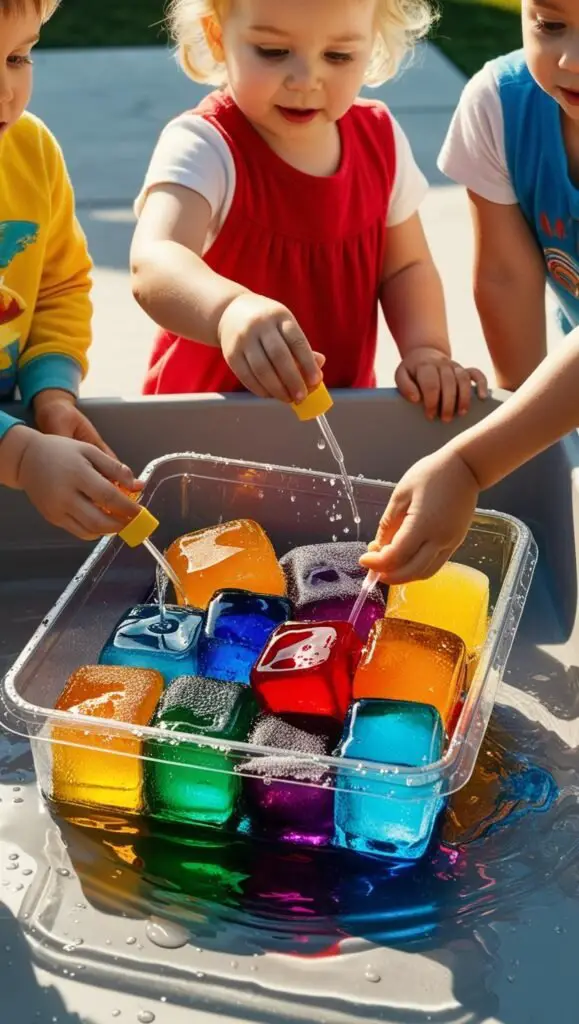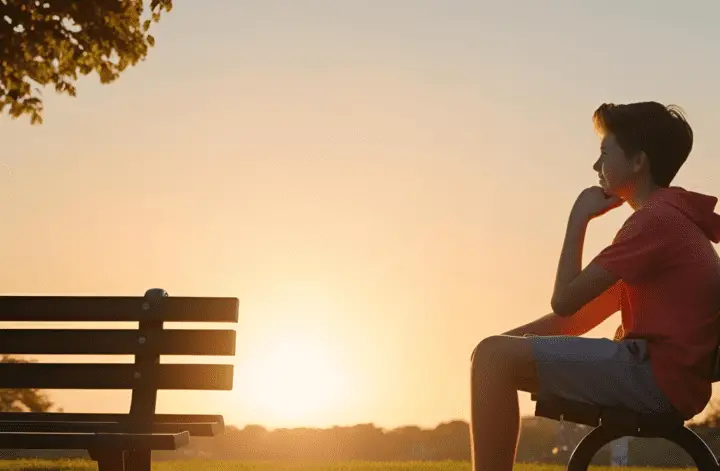When the sun is blazing and tempers start to flare, there’s one simple, magical ingredient that can help preschoolers reset: water. From its calming sound to the way it engages the senses, water is more than a summer necessity—it’s a natural tool for emotion regulation. Whether you’re at home or in a classroom, these water-based activities can help little ones cool down physically and emotionally while encouraging mindfulness, creativity, and connection.

Sensory Water Table with Emotional Faces
A simple sensory bin can be transformed into an emotional learning station. Fill a water table or large tub with cool water, then float laminated cards or plastic discs showing different facial expressions (happy, sad, calm, angry). Add scoops, strainers, and soft sponges to invite interaction.
As children scoop water over the faces or match toys to the emotions they recognize, they begin to externalize and identify their own feelings. The sensory feedback from the water adds a soothing layer, helping to down-regulate heightened states.
Water Painting with Big Strokes
Grab some thick paintbrushes, a bucket of water, and invite your preschoolers to become artists. Water painting works best on warm pavement, fences, or chalkboards. Children can make big, sweeping strokes or small careful marks as they “paint” with water.
The beauty of this activity lies in its simplicity. There’s no cleanup, no pressure to create a perfect product, and the motion of painting—especially in large arm movements—can be incredibly regulating. It’s an ideal way to redirect restless energy into creative flow.
Bubble Wash Station

Set up a washing station with soapy water and let kids wash toy animals, dolls, or cars. Add brushes, cloths, and containers for rinsing. Invite them to create a story about each item they’re washing: “This bunny was playing in the mud and now it’s time for a bubble bath!”
This type of imaginative play is not only fun, it taps into nurturing behaviors that are grounding and comforting. Repetitive motions like scrubbing and rinsing are naturally calming and build fine motor coordination too.
Ocean-in-a-Bottle Calm Jar

For a portable water-based calming tool, create ocean-themed calm jars. Fill clear bottles with water, blue food coloring, glitter, and small items like shells, beads, or sequins. Secure the lid tightly (with hot glue if needed) and invite kids to gently shake and watch the contents settle.
These jars are great for quiet moments when a child needs help soothing. Watching the glitter swirl and sink mimics the process of calming down from a big emotion—a visual metaphor preschoolers can understand.
Rainbow Ice Cube Melt

Freeze colored water in ice cube trays using natural food coloring. Once frozen, place the ice cubes in a shallow bin and provide warm water, droppers, salt, or even small squeeze bottles.
Children can experiment with melting the cubes slowly, observing the color trails as they mix and dissolve. This activity is slow-paced, sensory-rich, and great for patience-building—all while staying cool.
Foot Soak & Story Time

Bring a spa-like experience to the classroom or home by filling small tubs with cool water and having kids soak their feet while you read a calming story. You can add smooth stones or lavender petals to elevate the sensory experience.
This setup invites relaxation, sensory grounding, and connection through shared quiet time. The cool water helps soothe the body, while the story provides emotional nourishment.
Bubble Popping Mindfulness
Blow bubbles and invite children to pop them with intention: one with their finger, one with a toe, one with their elbow. You can also introduce a counting or breathing element, such as taking a deep breath for every three bubbles popped.
This simple game encourages breath awareness, focus, and playful movement—an easy way to integrate mindfulness into a high-energy summer day.
Scoop, Pour, and Listen
Set up a pouring station with different-sized containers, cups, funnels, and spoons. Let children explore the sounds and sensations of pouring water from one vessel to another.
Encourage them to listen: What does it sound like when water pours fast? What if it trickles slowly? This encourages sensory focus and helps children become aware of how certain actions can soothe or stimulate.
Backyard Sprinkler Mindfulness Walk
Turn on a gentle sprinkler and invite children to walk slowly through it barefoot. Ask them to pay attention to how the water feels on their toes, arms, back, and face. Pair it with a short guided prompt like: “Feel the water kiss your skin. Notice how it cools you down. Breathe in, step through.”
This activity helps children connect to their bodies and surroundings, reducing sensory overload and grounding them in the present moment.
Underwater Breathing Games
With adult supervision, play shallow water games that involve blowing bubbles underwater. Children can try humming tunes or “talking” under the water to create funny noises. Try pairing it with a song or rhythm game.
These games encourage deep, controlled breathing, which is one of the most effective tools for calming the nervous system. Plus, it adds a dose of giggles and social play, which boost mood and connection.
When used with intention, water becomes more than play—it becomes therapy in motion. These water activities are not only ideal for cooling down on hot days, they also support emotional wellness, sensory regulation, and joyful connection. Whether you’re in a classroom or your own backyard, a little water can go a long way in helping children feel calm, safe, and centered.



